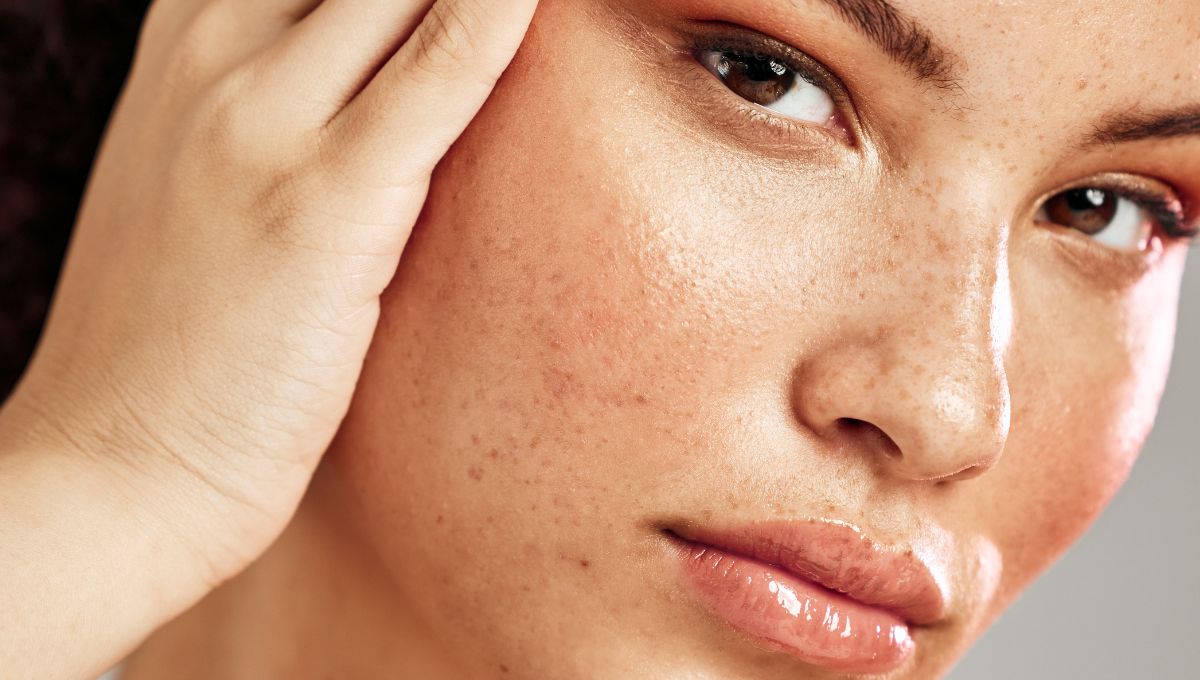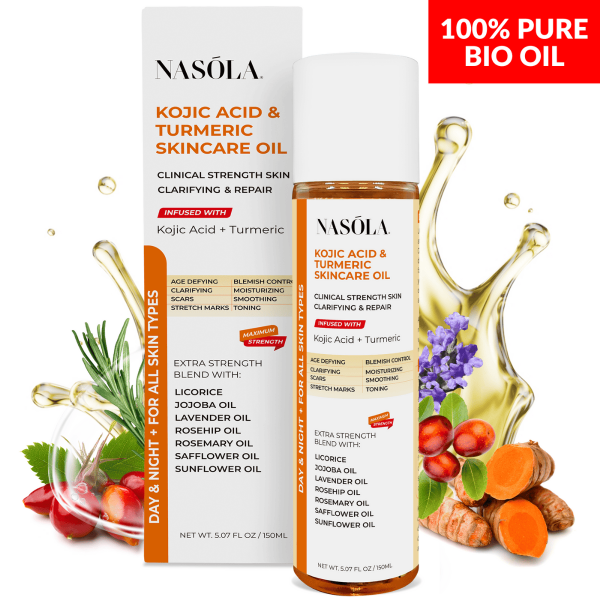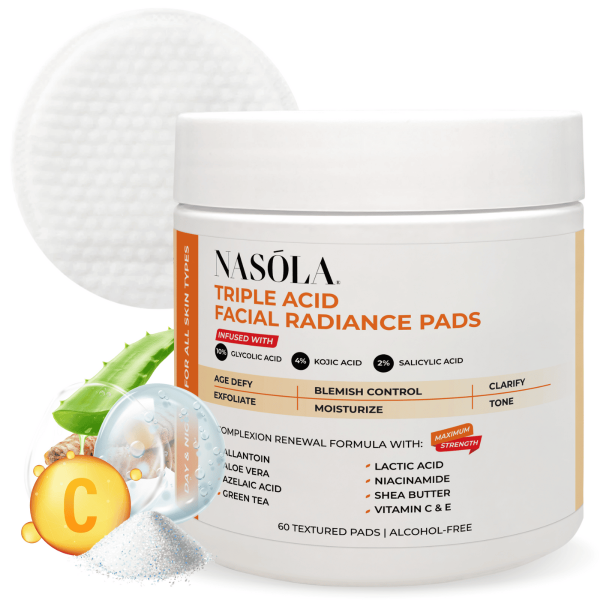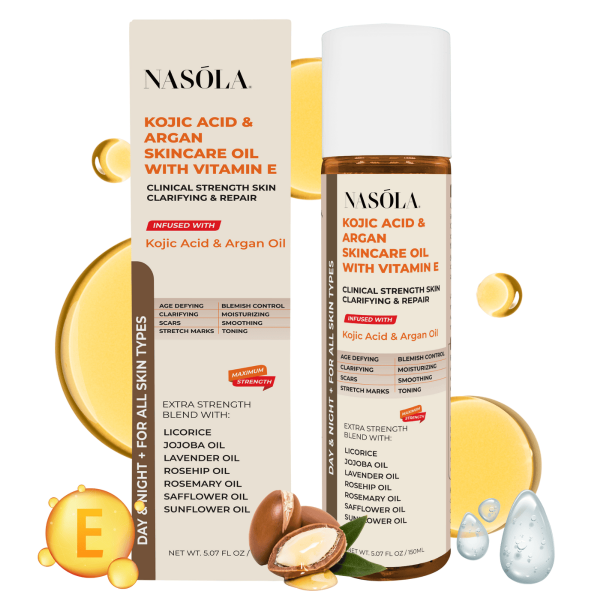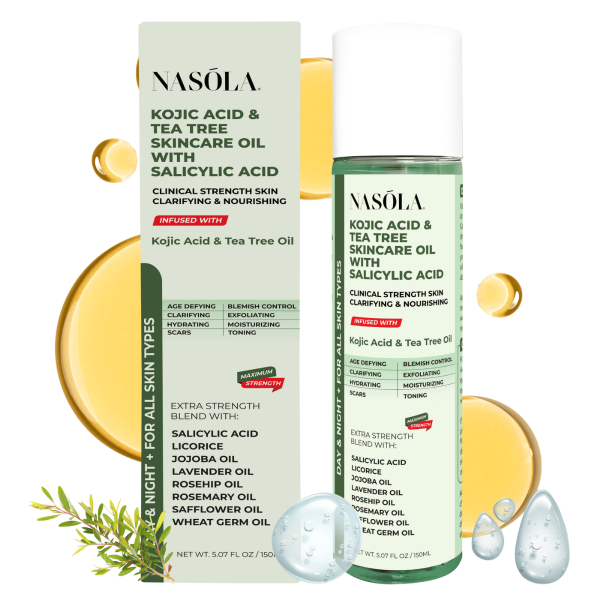Hormonal acne isn’t just a teenage drama—it sticks around, pops up during the worst times (hello, big meeting), and can feel downright defeating.
From jawline flare-ups to stubborn chin bumps, it’s like your skin’s acting out your stress. But good news—I’ve been there, and I’ve got something exciting to share with you.
Using essential oils for hormonal acne can genuinely change the game. We’re not talking about random kitchen oils or DIY disasters.
We’re talking about pure, skin-loving essential oils blended into powerhouse products that soothe like nature and work like science.
In this blog, you’ll get the low-down on the best essential oils for hormonal acne, how to use them (safely!), and which products combine them with proven ingredients like kojic acid and salicylic acid.
Let’s just say your skin is going to send you a thank-you text after this.
- Best Essential Oils for Hormonal Acne
- Ingredient Spotlight: Kojic Acid and Hormonal Acne Relief
- Salicylic Acid and AHAs in Treating Hormonal Acne
- Additional Natural Ingredients That Complement Essential Oils for Hormonal Acne
- How to Safely Use Essential Oils for Hormonal Acne
- Lifestyle Tips to Amplify Essential Oils for Hormonal Acne
- Conclusion
- Frequently Asked Questions
Best Essential Oils for Hormonal Acne
When it comes to skin that breaks out during your period, stress-surge weeks, or post-binge sugar spikes, you’re likely dealing with hormonal acne.
Now, here’s where it gets exciting—some of the best essential oils for hormonal acne not only calm the chaos but actually tackle the root cause: inflammation, bacteria, and oil production.
Below, you’ll find the top oils I swear by, PLUS their natural pairings in products that actually deliver. Ready to glow minus the breakout blues?
Tea Tree Oil: Acne’s Natural Enemy
Let’s get one thing straight—tea tree oil isn’t a trend; it’s a skin-care staple. Especially for hormonal acne, this oil fights acne-causing bacteria and calms inflammation without drying out your skin like conventional treatments.
Packed with antiseptic properties, tea tree oil:
- Reduces redness and swelling from active breakouts
- Clears clogged pores
- Regulates oil production
- Minimizes future pimples
Want to skip the mixing and mess? Use Nasola Kojic Acid Tea Tree Skincare Bio Oil with Salicylic Acid.
This little bottle is a genius blend of tea tree oil, kojic acid, and salicylic acid—meaning it unclogs pores, fades dark spots, and calms breakouts all in one sleek pump. It’s a must-have if you want results and not experiments.
It’s gentle—but potent. Use it nightly to let your skin reset while you sleep.
Lavender Oil: Calming Inflammation
Lavender oil isn’t just great in your evening diffuser—it’s one of the best essential oils for hormonal acne when tension and stress are part of your breakout triggers.
Its antibacterial properties make it great for spot treatment while its soothing aroma reduces cortisol levels (aka the stress hormone that loves to mess with your skin).
Lavender oil:
- Reduces swelling and redness (goodbye angry cystic pimples)
- Accelerates healing of damaged skin
- Fights acne-causing bacteria naturally
- Provides stress-relief aromatherapy benefits
A few diluted drops or a product with lavender oil can certainly help, but pair with exfoliating ingredients (like salicylic or glycolic acids) for the best impact.
Clary Sage Oil: Hormonal Balancer
This gem of an oil gets personal with your hormonal signals. Clary sage oil is one of the few essential oils for hormonal acne that helps regulate sebum production while also calming high-octane hormonal activity.
Here’s what makes it powerful:
- Balances estrogen-like properties in the skin
- Reduces oiliness without stripping hydration
- Contains linalyl acetate—a skin-calming compound that has anti-inflammatory effects
- Helps reduce skin reactivity linked to menstruation or stress
Clary sage oil is fantastic when used weekly in diluted form or when included in targeted products combined with acids and brighteners for post-acne recovery.
Ingredient Spotlight: Kojic Acid and Hormonal Acne Relief
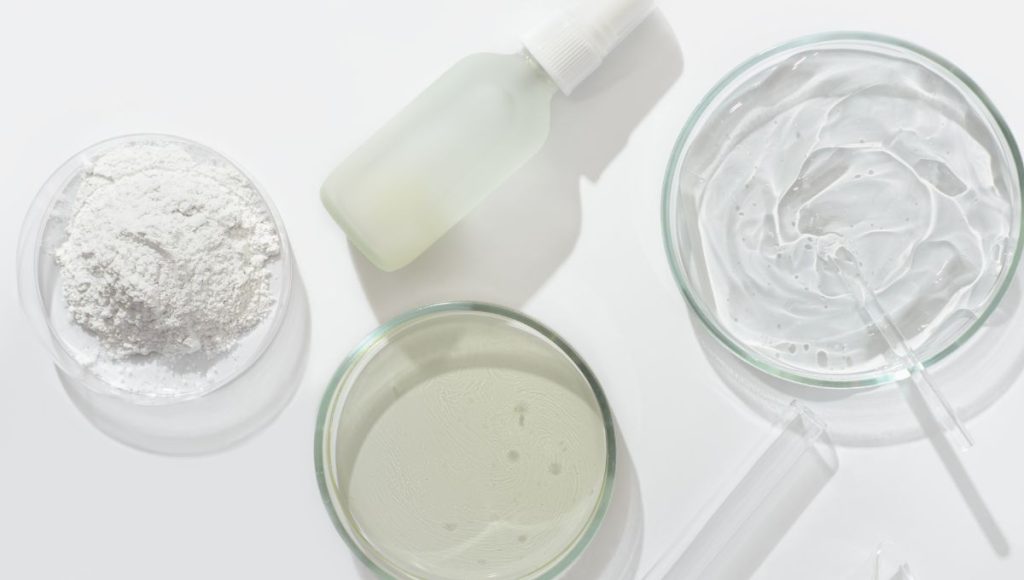
Now let’s talk about something that doesn’t get enough credit—kojic acid.
This natural brightener, extracted during the fermentation of rice and certain fungi, is a powerhouse when it comes to fading scars and evening out hyperpigmentation from hormonal acne.
But wait, it gets better when teamed up with essential oils. Think of it as the friend who brings the good vibes AND cleans the mess.
How Kojic Acid Works with Essential Oils
Pairing kojic acid with essential oils amps up your routine! While oils soothe inflammation and bacteria, kojic acid lightens the lingering shadows those breakouts leave behind.
- Kojic acid reduces melanin production, which minimizes dark spots
- It works well with calming oils like turmeric, tea tree, and argan
- It enhances skin tone and texture over time
- Especially helpful for medium to deep skin tones dealing with stubborn pigmentation
Product Recommendation:
Try the Nasola Kojic Acid Turmeric Skincare Bio Oil—here turmeric’s antibacterial power meets kojic acid’s tone-evening magic. If your skin is feeling constantly inflamed or scarred from breakouts, this duo might just be your light at the end of the tunnel.
Does your skin get dry yet still breaks out?? Yep—been there. Nasola Kojic Acid Argan Skincare Bio Oil is perfect for that. Argan oil nourishes dry, irritated skin without triggering new breakouts, while kojic acid clears up old spots.
Salicylic Acid and AHAs in Treating Hormonal Acne
Exfoliation… it’s either your best friend or your angry ex. When you’re tackling hormonal acne, knowing what exfoliants to use makes all the difference.
Chemical exfoliants like salicylic acid and AHAs (alpha hydroxy acids) can treat acne at its deepest layer—removing dead cells, clearing pore congestion, and making skin brighter overnight.
Hormonal acne often originates deep within the skin, so using ingredients that go beyond the surface is a smart move. Here’s how:
The Case for Salicylic Acid
Salicylic acid, a BHA (beta hydroxy acid), penetrates deep into the pores to break down oils and inflammatory cells. This is crucial for hormonal breakouts which often start beneath the skin’s surface.
The benefits?
- Breaks up build-up in pores and hair follicles
- Reduces whiteheads and blackheads
- Encourages skin turnover
- Pairs lovely with antibacterial essential oils
Get yourself a treatment worth the rave: Nasola Kojic Acid Tea Tree Skincare Bio Oil with Salicylic Acid. It does all of the above while gently brightening your skin tone, thanks to the kojic acid bonus!
The Power of Triple Acids
Ready to level up? For stubborn spots and texture issues caused by hormonal acne, look to triple acid formulas combining glycolic, lactic, and salicylic acids.
These acids work together to:
- Remove dead skin gently but thoroughly
- Clear congestion causing bumpy texture or inflamed breakouts
- Brighten discolored patches left by acne post-fade
- Enhance skincare absorption so oils and serums go deeper
The Nasola Triple Acid Facial Radiance Pads are pre-soaked goodies that exfoliate without hassle. Swipe on at night—wake up to smoother, fresher skin.
Additional Natural Ingredients That Complement Essential Oils for Hormonal Acne
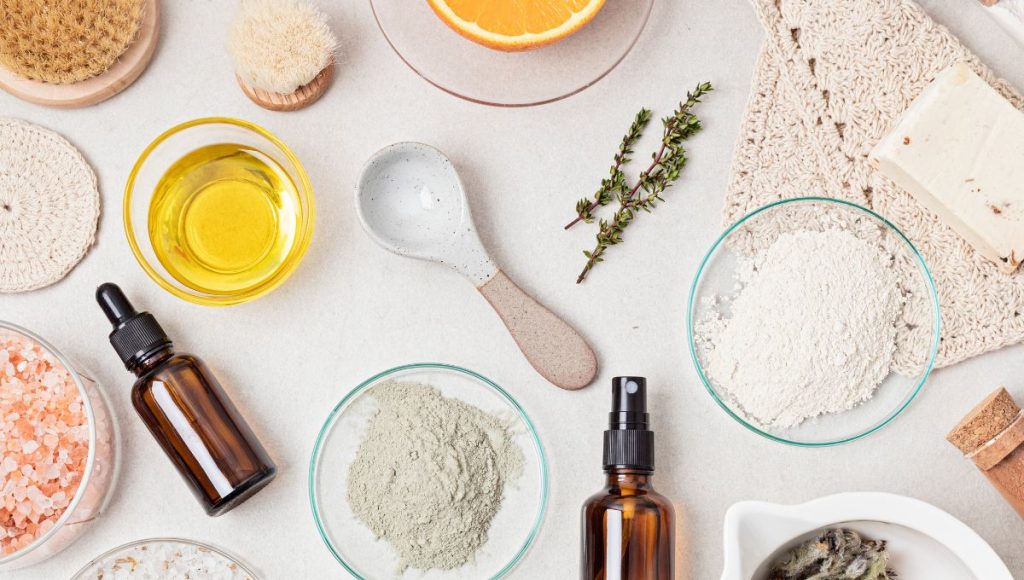
Essential oils are team players. And when you’re taking on hormonal acne, using them alongside other natural ingredients can really double down on results. Two MVPs that always shine in this combo:
Turmeric (Curcumin)
Turmeric doesn’t just spice up your latte—it changes the tone (literally) of your skin.
It offers:
- Anti-inflammatory response to reduce active breakouts
- Antioxidant protection from pollution and oxidative stress
- Brightened appearance and smoother glow
- Reduced scarring and pigmentation
Best in show? Nasola Kojic Acid Turmeric Skincare Bio Oil. Perfect for spot-fading and regulating redness.
Argan Oil
Argan oil is one of the few oils you can use even if your skin freaks out over everything.
Why it works:
- Moisturizes without clogging pores
- Balances oily zones
- Strengthens the skin barrier to prevent reactivity
- Soothes after exfoliation
You’ll love Nasola Kojic Acid Argan Skincare Bio Oil—especially post-shower or as an overnight nourishing step.
How to Safely Use Essential Oils for Hormonal Acne
Safety first, always. While essential oils for hormonal acne are incredible, they need thoughtful use. Applying them wrong could do more harm than help—no thanks!
Here’s how to use them the right way:
Proper Dilution is Key
Essential oils are potent. Undiluted oils on your face? Major no-no.
Instead:
- Always mix with carrier oils like jojoba, argan, or rosehip
- Or better yet, use pre-formulated options like Nasola bio oils for precise and safe blends
- Avoid oil-heavy layering over active acne—keep it balanced
- Use 1–2 drops in DEEPLY diluted amounts when DIY
Patch Test to Avoid Irritation
No matter how “natural” it sounds, your skin might still say “nope.”
How to patch test:
- Apply a small amount to your inner wrist or jawline
- Wait 24–48 hours to rule out redness, bumps, or itching
- Test only one new oil or product at a time
- If okay, go ahead and incorporate gradually
Best Time to Apply
Apply most essential oil products during your nighttime routine.
Why?
- Your skin repairs itself while you sleep
- No added sun exposure while active ingredients work
- Gives time for oils and acids to absorb fully
- You’ll wake up glowy (instead of greasy!)
Lifestyle Tips to Amplify Essential Oils for Hormonal Acne
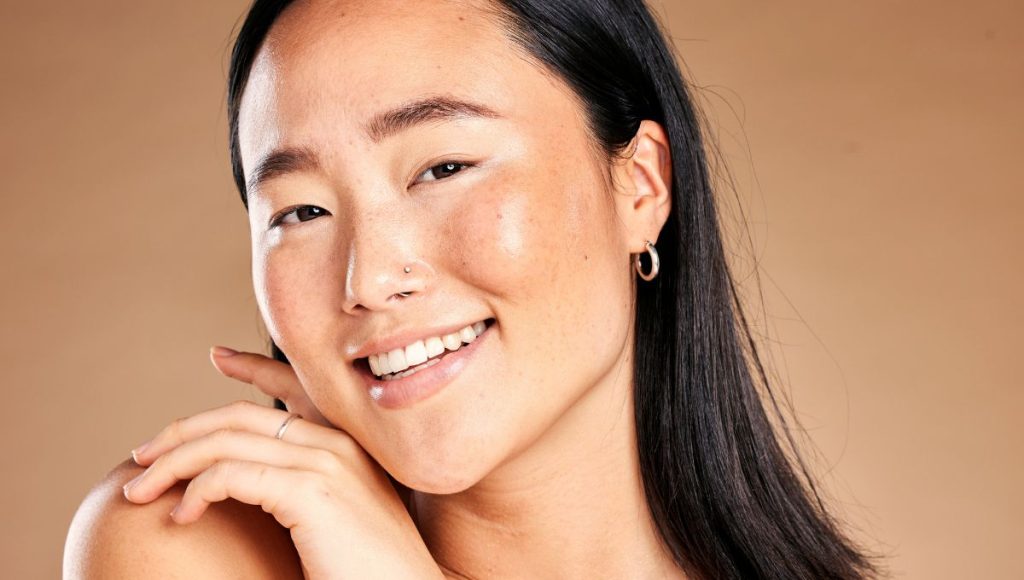
While your skincare routine gets to work on the outside, what you do internally matters just as much. Supporting your essential oils for hormonal acne strategy with simple lifestyle habits can make a HUGE difference.
Manage Stress and Sleep
Stress messes with hormones—it can trigger cortisol spikes and throw off your skin’s balance. Add lack of sleep? Trouble.
Helpful habits:
- Set a wind-down routine (lavender oil, anyone?)
- Cut electronics an hour before bed
- Try short meditations to ease racing thoughts
- Aim for deep 7–8 hour sleep
Nutrition and Hydration
Hormonal acne can worsen with nutrient deficiencies or dehydration. Boosting your skin from the inside is just as critical.
Nourish your skin by:
- Drinking half your body weight in ounces of water daily
- Eating omega-rich foods like salmon and avocado
- Limiting refined sugars (enemy #1)
- Including zinc, vitamin A, and omega-3 supplements, if needed
Conclusion
Using essential oils for hormonal acne doesn’t mean you’re stuck mixing mystery oils in a darkened bathroom. With the right knowledge and the right blends—like those found in Nasola Kojic Acid Turmeric Skincare Bio Oil, Nasola Kojic Acid Tea Tree Skincare Bio Oil with Salicylic Acid, and Nasola Triple Acid Facial Radiance Pads—you’re setting yourself up for success.
The key is combining nature’s balancing oils with proven actives like kojic acid and salicylic acid. Let that powerful cocktail do the hard work so you can—finally—feel confident showing up bare-faced, breakout-free, and radiant.
You deserve products that care. Let your glow tell your story.
Frequently Asked Questions
Some of the best essential oils for hormonal acne include tea tree oil, lavender oil, clary sage oil, and turmeric oil. They help reduce inflammation, support bacterial balance, and regulate oil production.
Essential oils help manage symptoms and reduce breakouts but aren’t a standalone cure. Combine them with healthy habits and high-performing products like Nasola Kojic Acid Tea Tree Skincare Bio Oil with Salicylic Acid for better long-term results.
Only when diluted properly, like in a finished product. Nasola Kojic Acid Tea Tree Skincare Bio Oil with Salicylic Acid offers daily-safe use for acne-prone skin.
Turmeric is great for fading dark spots, especially when combined with kojic acid. Try Nasola Kojic Acid Turmeric Skincare Bio Oil for visible improvement.
Yes! Use essential oils with products like Nasola Triple Acid Facial Radiance Pads to maximize penetration and results—but don’t overdo it. Always moisturize afterward.
Yes. Nasola products use cruelty-free, skin-friendly formulas that are safe for sensitive skin when used as directed.

